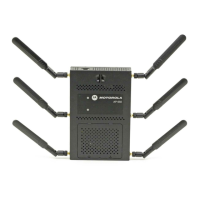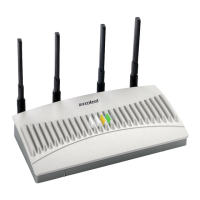Operations
12-21
17.Select OK to export the trustpoint. Select Cancel to revert the screen to its last saved configuration.
18.To optionally delete a trustpoint, select the Delete button from the Trustpoints screen. Provide the
trustpoint name within the Delete Trustpoint screen and optionally select the Delete RSA Key
checkbox to remove the RSA key along with the trustpoint. Select OK to proceed with the deletion, or
Cancel to revert to the last saved configuration.
12.2.2 RSA Key Management
Certificates
Refer to the RSA Keys screen to review existing RSA key configurations that have been applied to managed
devices. If an existing key does not meet the needs of a pending certificate request, generate a new key or
import or export an existing key to and from a remote location.
Rivest, Shamir, and Adleman (RSA) is an algorithm for public key cryptography. It’s an algorithm that can be
used for certificate signing and encryption. When a device trustpoint is created, the RSA key is the private
key used with the trustpoint.
To review existing device RSA key configurations, generate additional keys or import/export keys to and from
remote locations:
1. Select Operations > Certificates.
2. Select RSA Keys.
URL Provide the complete URL to the location of the trustpoint. If needed, select
Advanced to expand the dialog to display network address information to the
location of the target trustpoint. The number of additional fields that populate
the screen is also dependent on the selected protocol.
Protocol Select the protocol used for exporting the target trustpoint. Available options
include:
• tftp
• ftp
• sftp
• http
•cf
•usb1
•usb2
Port Use the spinner control to set the port. This option is not valid for cf, usb1, and
usb2.
IP Address Enter IP address of the server used to export the trustpoint. This option is not
valid for cf, usb1, and usb2.
Hostname Provide the hostname of the server used to export the trustpoint. This option is
not valid for cf, usb1, and usb2.
Path Specify the path to the trustpoint. Enter the complete relative path to the file
on the server.

